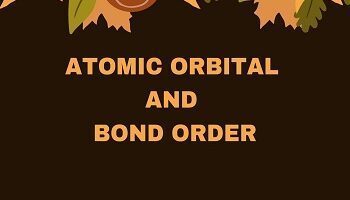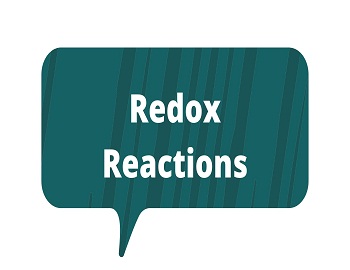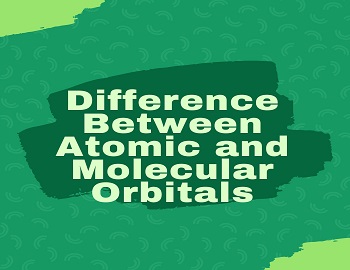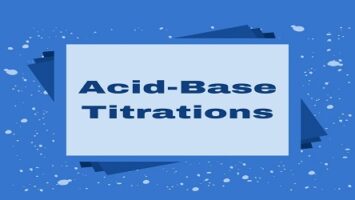Table of Contents
Ideal and Non-Ideal Solutions:
Ideal Solutions:
An ideal solution may be defined as the solution which obeys Raoult’s law exactly at all concentrations and at all temperatures. In these solutions, the intermolecular interactions between the components (A – B attractions) are of same magnitude as the intermolecular interactions in pure components (A – A and B – B attractions). According to Raoult’s law, the partial vapour pressure of two components of the solution may be given as-
| pA = pA° xA and pB = pB° xB Total pressure p is given by p = pA + pB = pA° xA + pB° xB |
The ideal solutions have also the following characteristics:
(i) Heat change on mixing is zero- Since there is no change in magnitude of the attractive forces in the two components present, the heat change of mixing i.e., ΔHmix for such solutions must be zero.
(ii) Volume change on mixing is zero- In ideal solutions, the volume of the solution is the sum of the volumes of the components before mixing i.e., there is no change in volume on mixing or ΔVmix is zero.
For example, when we mix 100 ml of benzene with 100 ml of toluene, the volume of the solution is found to be exactly 200 ml. Therefore, there is no change in volume on mixing i.e., Δmixing V = 0. It has been noticed that the solutions generally tend to become ideal when they are diluted.
The characteristics of an ideal solution may be summed up as follows-
- It must obey Raoult’s law.
- ΔHmix should be zero.
- ΔVmix should be zero.
Examples of ideal solutions: In fact, ideal solutions are quite rare but many solutions practically behave as ideal. A few examples of ideal solutions are;
- Benzene + Toluene.
- n-hexane + n-heptane.
- Ethyl bromide + Ethyl iodide.
- Chlorobenzene + Bromobenzene.
Graphical representation of behaviour of ideal solutions- It is clear from the figure that the vapour pressure of solutions of different compositions, in the case of ideal solutions, lies between the vapour pressure of the pure components (pA° and pB°) as is clear from the figure.

Non-Ideal Solutions:
The solutions which do not obey Raoult’s law are called non-ideal solutions. Therefore, for such solutions:
| pA ≠ pA° xA and pB ≠ pB° xB |
In non-ideal solutions, there is a noticeable change in volume and heat energy when the two components are mixed. Most of the solutions are non-ideal because they deviate from ideal behaviour to more or less extent. Thus, for non-ideal solutions-
- None of the components obeys Raoult’s law over the entire composition range, i.e., pA ≠ pA° xA and pB ≠ pB° xB.
- ΔVmix is not equal to zero.
- ΔHmix is not equal to zero.
Thus, non-ideal solutions do not obey Raoult’s law and are accompanied by a change in enthalpy and a change in volume during their formation.
Types of Non-Ideal Solutions:
There are two types of non-ideal solutions-
- Non-ideal solutions showing positive deviations from Raoult’s Law.
- Non-ideal solutions showing negative deviations from Raoult’s Law.
Non-ideal solutions showing positive deviations from Raoult’s Law:
If for the binary solution of two components A and B; the partial pressure of each component is found to be more than expected on the basis of Raoult’s Law; then the total vapour pressure of such solution will be greater than that corresponding to ideal solution. Such behaviour of the solution is described as a positive deviation from Raoult’s Law.
The positive deviations are exhibited by such liquid pairs for which the A-B molecular interaction forces are lower than the A-A or B-B molecular interaction forces so that escaping tendencies of both the components are made in solution than in pure states. The vapour pressure curves for such a solution are shown below in which dotted lines show the ideal behaviour upon mixing while the thick lines exhibit the actual behaviour.

Then for such solutions, the following characteristics are obtained-
- ΔHmixing > 0
- ΔVmixing > 0
A few examples of solutions showing positive deviations are-
- Acetone + Carbon disulphide.
- Acetone + Ethyl alcohol.
- Benzene + Acetone.
- Ethyl alcohol + Water.
- Ethyl alcohol + Cyclohexane.
Non-ideal solutions showing negative deviations from Raoult’s Law:
If for a binary mixture of two components A and B; the partial pressure of each component is found to be less than that expected on the basis of Raoult’s Law, then the total pressure of such solution will be lesser than that of the corresponding ideal solution. Such behaviour of the solution is called a negative deviation from Raoult’s law.
The negative deviations are exhibited by such liquid pairs for which the A-B molecular interaction forces are stronger than the A-A or B-B molecular interaction forces and escaping tendencies of both solute and solvent are less in solution than in pure states. In such solutions, it is generally seen that solute-solvent get attracted through H-bonding or dipole-dipole interaction, due to which such deviations are seen.
The vapour pressure curves for such a solution are shown below in which dotted lines show the ideal behaviour upon mixing while the thick lines exhibit the actual behaviour.

Such solutions are characterized by the following features-
- ΔHmixing < 0
- ΔVmixing < 0
A few examples of solutions showing negative deviations are-
- Acetone + Chloroform.
- Acetone + Aniline.
- Chloroform + Diethyl ether.
- Chloroform + Nitric acid.
- Acetic acid + Pyridine.









Comments (No)